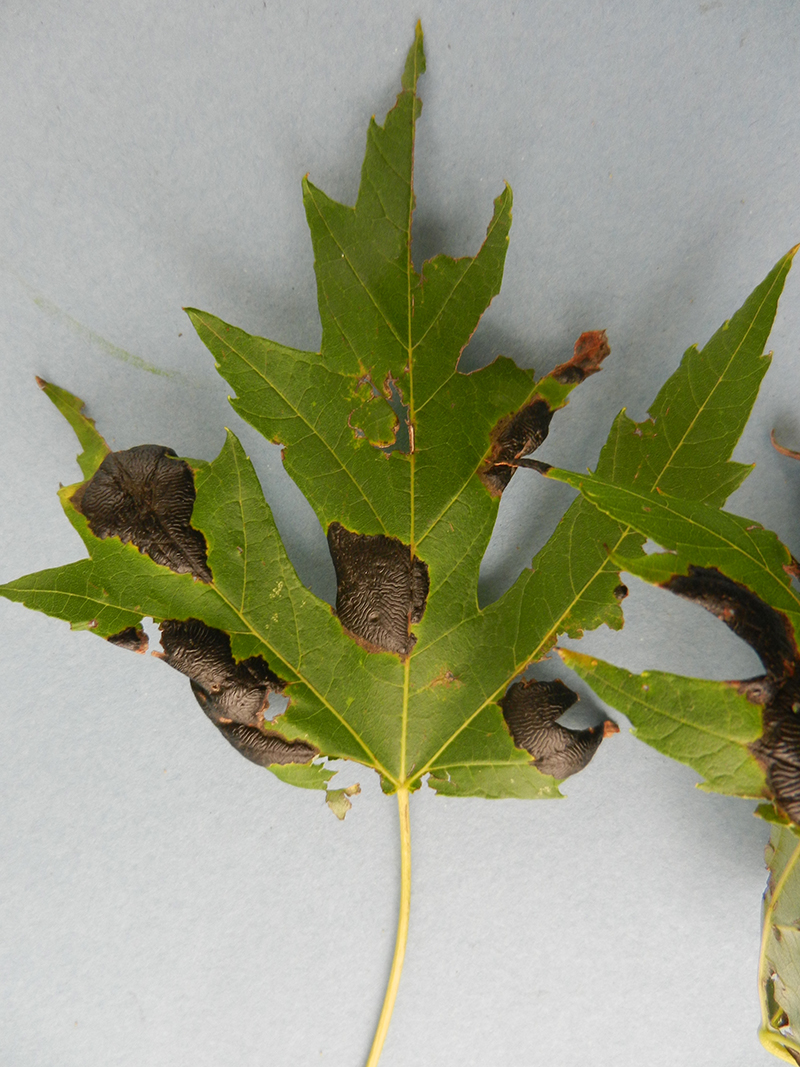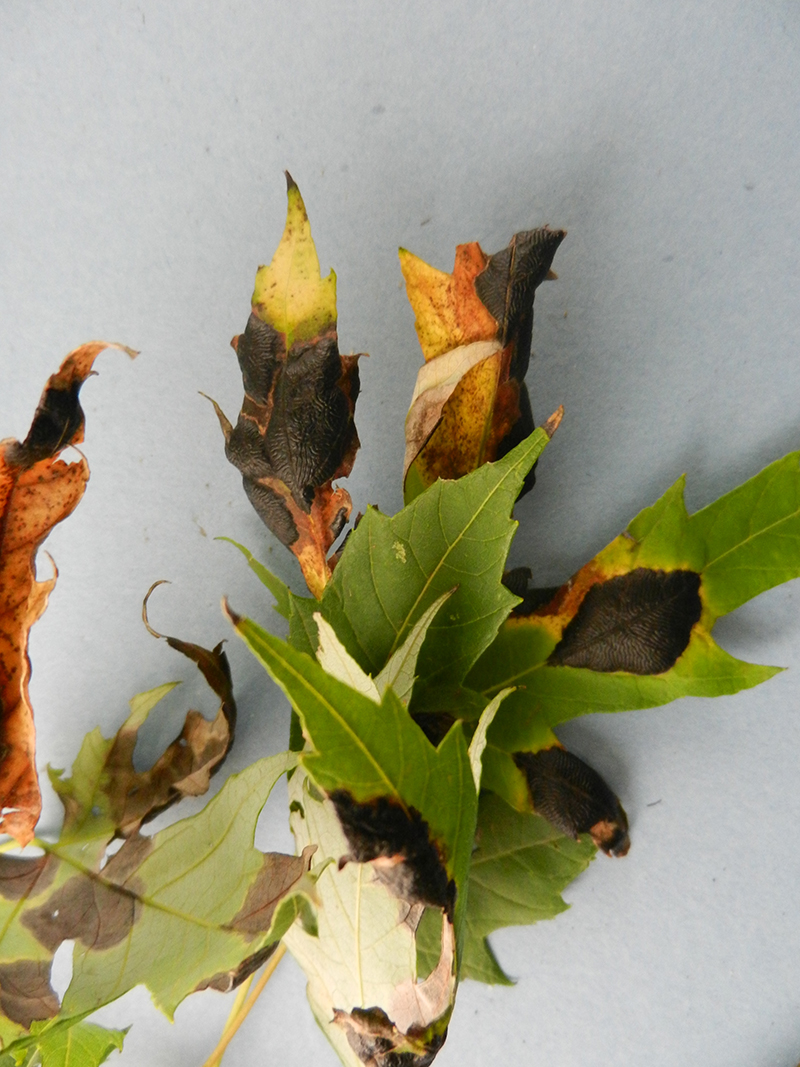Picture of the Week
July 25, 2022
Tar Spot on Maple
Gail Ruhl, Sr. Plant Disease Diagnostician-retired, Botany & Plant Pathology, Purdue University
Every summer we get questions about black spots on maple leaves that look like tar. These spots are not actually "tar" on maple, but are rather a fungal disease known as tar spot.
Tar spots on maples are caused by fungi in the genus Rhytisma. The most common species are Rhytisma acerinum and R. punctatum. Symptoms first appear in late spring or early summer as infected leaves develop light green or yellow-green spots. During mid to late summer, black tar-like raised structures are formed on the upper surface of leaves within the yellow spots. R. acerinum causes larger spots that are 0.5 to 2 cm in diameter; R. punctatum causes many small punctate spots that are smaller (about 1mm in diameter). Spots caused by R. punctatum are sometimes called speckled tar spots.
Although tar spot disease may cause premature defoliation, seldom are they detrimental to the overall health of infected trees. Tar spot diseases are best managed by raking and destroying fallen leaves since the fungi overwinter on leaves.
Click images to enlarge




